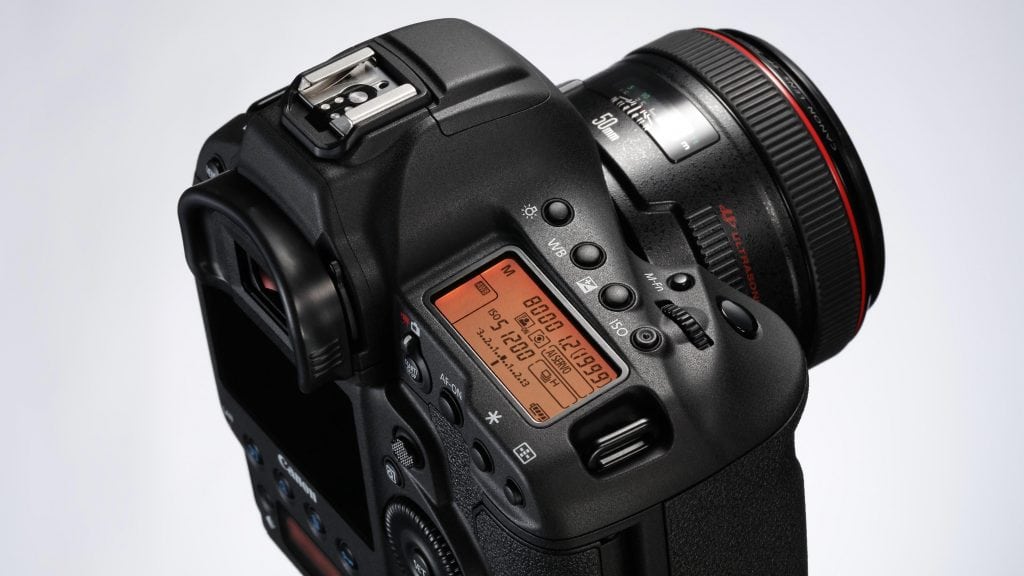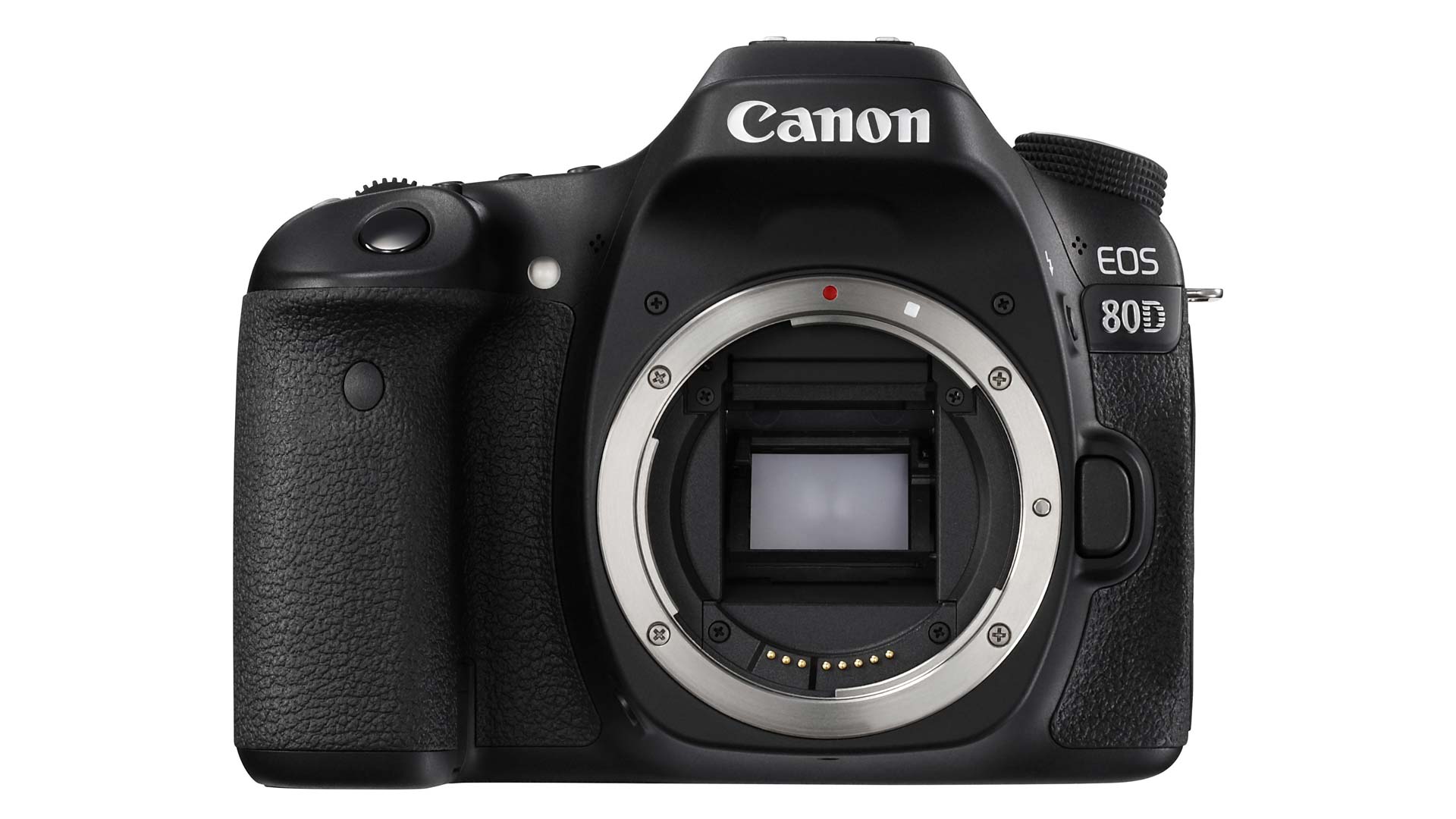How To Tell If A Camera Is A Dslr
For about decades, both professional person and amateur photographers alike have preferred the single lens reflex camera. But what is a DSLR camera, how do they work, and why are they and then pop? In this tutorial we explain the primal points you need to know when making the jump to shooting with a DSLR camera.
ane. What is Single Lens Reflex?
While the proper noun 'single lens reflex' camera seems a bit primitive today, there was a time when twin lens reflex (TLR) cameras were in high demand – and in that location are still a couple of models on sale today.
The ii lenses of a TLR have the aforementioned focal length and their focusing mechanisms are linked, simply they are used for two distinct tasks. The 'viewing lens' is intended for focusing while the lensman looks in the waist-level viewfinder, while the 'taking lens' sits in forepart of the film, ready for exposure in a different sleeping accommodation.
The word 'reflex' comes from the fact that TLR and DSLR (DSLR simply ways 'digital unmarried lens reflex') cameras both have a reflex mirror – basically a mirror at 45 degrees – that reflects light from the lens into the viewfinder.
In a TLR, the mirror is stock-still and the scene is visible in the viewfinder throughout the exposure.
In a DSLR photographic camera, all the same, the mirror will flip up during exposure in order to permit the light to reach the picture show or sensor. This blanks out the viewfinder for the length of the exposure.
ii. The viewfinder is optical
DSLRs have an optical viewfinder that collects light from the same lens that is used to capture the image. The light that is exiting the lens is reflected upward into a pentaprism (or pentamirror) when the mirror is down.
The pentaprism then bounces the light effectually to produce an epitome on the viewfinder screen that is the right way round. This allows SLRs to exist smaller in size than TLRs and also resolved the consequence of parallax fault met with rangefinder cameras – they do not perceive the scene through the lens.
Contemporary SLR viewfinders are typically bright and user-friendly, but unlike the electronic viewfinders found in several meaty system cameras, they cannot brandish the impact of camera settings.
Just prior to exposure, the reflex mirror lifts in order to permit low-cal to reach the sensor. This in turn makes the viewfinder go black during exposure.
three. Exposure is controlled by shutter speed, discontinuity and sensitivity
With a DSLR camera, in that location are 3 means of managing exposure; shutter speed (exposure time), aperture, and sensitivity.
Shutter speed and discontinuity size determine the corporeality of light that reaches the sensor, but the camera really has a constant base sensitivity that consistently remains.
Other sensitivity settings are made by applying gain (amplification) to the paradigm signal (more on this bespeak later) to reproduce the issue of a more sensitive medium.
4. Almost DSLR cameras offer a drove of exposure modes
The bulk of modern DSLR cameras provide a wide range of exposure modes from completely manual to completely automated options, such equally aperture priority and shutter priority mode in betwixt.
Typically, there is too a collection of scene modes in which the camera selects exposure and processing settings that are fitting to that particular type of scene.
These scene modes may be chosen by the lensman, but several cameras at present provide a mode in which the photographic camera pre-empts the photographer by detecting the type of scene and so applying advisable exposure and processing settings.
In discontinuity priority style, the photographer sets the aperture to command depth of field and the camera sets a shutter speed that will produce a proficient exposure.
On the other hand, in shutter priority mode the photographer sets the shutter speed to freeze or mistiness movement co-ordinate to their needs, and the camera sets a proportionate discontinuity. The photographer possesses consummate control over the shutter speed and discontinuity in manual style.
Several DSLR cameras now offering photographers the selection to set up sensitivity automatically. The photographer however sets the shutter speed and discontinuity if this fashion is selected when shooting in transmission exposure mode, but the camera establishes the overall exposure by varying sensitivity as it calculates is required from shot to shot.
5. The sensor produces an electric signal
Once the reflex mirror is lifted and the shutter opened, the sensor is exposed to lite allowing an image to exist recorded. The sensor is covered with photo receptors, frequently referred to as pixels, each of which has a micro lens over it to guide the light downwardly.
Typically the sensor has a Bayer blueprint filter array over information technology, this allows the photographic camera to interpret colours even though each receptor actually but detects luminance (brightness).
This red, green, light-green, bluish (RGGB) filter has two greenish filters for every red or blue filter to reverberate the authorization that green has in our vision.
Calorie-free falling on the sensor produces an electronic signal. The brighter the low-cal is, the stronger the betoken volition be. This electronic point is then converted into a digital indicate, which can then be candy into a digital image.
six. They have two AF systems
At that place is a dedicated autofocus (AF) sensor which is used to focus the lens when the viewfinder is used for composing images. This system employs phase detection, which tin can be very fast, and it works between exposures when the mirror is in the down position.
Once the camera is changed to Live View mode and the prototype is composed on the screen on the back of the camera, the reflex mirror is lifted and light tin no longer reach the AF sensor. The majority of SLRs instead use a dissimilarity detection AF organisation that uses information from the imaging sensor.
A few DSLR cameras employ a hybrid system which merges contrast detection with phase detection, which dedicated phase detection AF points on the imaging sensor. Contrast detection systems have a tendency to be significantly slower than phase detection systems.

7. SLR lightmeters take reflected readings
A few modern SLR exposure metering systems are incredibly sophisticated, but sometimes they tin can still exist tricked by very vivid or night subjects.
This is because they mensurate the amount of light being reflected from a scene and typically they expect a scene to boilerplate out equally a mid-tone.
If the scene is drastically lighter than mid-tone the camera may gear up (or propose) exposure settings that underexpose the scene making it darker in the image than information technology is in reality. On the other paw, scenes that are very dark can cause overexposure.
8. Buffer capacity and card speed is important
A few cameras offering impressive continuous shooting rates which are quite handy when you're shooting sport or action. However, these cameras can only sustain this rate for a brusk length of time until the buffer, the photographic camera's temporary storage, becomes total.
The camera clears the buffer to permit boosted shots to be taken past writing the images to the removable retentivity carte du jour. If the card installed is cheap and boring, information technology will be slow to articulate the buffer, so you must wait before you can accept more shots.
If the camera is compatible, faster cards will allow the buffer to be cleared at a faster pace allowing more images to be taken in a sequence to lessen waiting around between shots. Buffers with larger chapters volition allow more images to exist stored to permit longer shooting sequences.
9. Mirror movements can cause blur
The wobble that is brought about past the mirror movements that are necessary to let a shot to be taken are not an issue with 'normal' exposure times. With longer exposures, however, the wobble can cause minor blurring of the image.
Past setting the photographic camera to mirror lock-upward or exposure filibuster mode, the outcome of 'mirror-bounciness' or 'mirror-slap' can be circumvented.
One time the mirror lock-upwards is put in place the showtime press of the shutter release will lift the mirror. Once the vibration has subsided, a 2nd press will then trip the shutter.
These two shutter release actions should preferably be made with a remote release so the camera itself does not need to be touched, which can cause vibrations.
A single press of the shutter release is all that is required with exposure delay way, the shutter fires automatically but a few seconds later on the mirror is lifted.

10. The lens mount is specific to the manufacturer
One benefit of the SLR over the compact camera is that you can change lens. That said, the mount on the camera is specific to the manufacturer and y'all take to use compatible lenses.
Compatible lenses are available from third party manufacturers in most cases, however it'southward essential to ensure that you get the correct version. Canon, Nikon and (hopefully) soon Pentax make SLRs with 2 different sized sensors (APS-C and total-frame) and it's important to brand sure that the lens is intended for the sensor in your camera.
- Beginner Photography Techniques
- All-time Camera
- Photographic camera Tips
- Cameras
- SLR / SLT
Source: https://camerajabber.com/dslr-cameras-explained-10-things-know-single-lens-reflex/
Posted by: brownbefeepilf.blogspot.com

0 Response to "How To Tell If A Camera Is A Dslr"
Post a Comment